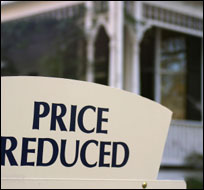Recent research indicates that, despite the recovery of the American economy and the relative rise in incomes, the median income in the United States remains below what it was at the beginning of the recent recession.
The persistence of these economic doldrums has colored the outlook of many Americans. A 2012 report from the Pew Research Center, “The Lost Decade of the Middle Class,” surveyed nearly 1,300 people who identified with this income tier and found pervasive gloominess: 85% said it was “more difficult” for “middle class people to maintain their standard of living” compared to a decade ago. When asked if it was likewise “harder to get ahead today” than 10 years ago, 71% agreed. The Pew report, which also analyzed Census and Federal Reserve figures, found that the underlying historical trend data support this gloominess: 51% of all adults were middle class in 2011, compared to 61% in 1971. Further, in 1971, the middle class had 62% of the income wealth; by 2011, that figure had fallen to 45%.
This storyline of a “hollow middle” and widening inequality in America — and the related narrative of a growing divide in cultural life — is now commonly reported across towns and cities. For a detailed case study, see the scholar Robert Putnam’s recent examination of the transformation of his hometown in Ohio.
What factors are driving all of this? A 2013 study from New York University economist Edward N. Wolff, “The Asset Price Melt-down and the Wealth of the Middle Class,” brings further clarity to this issue. The research, part of the US2010 Project sponsored by the American Communities Project at Brown University and the Russell Sage Foundation, sheds light on the financial portfolios of households and the role that debt and housing as a proportion of the portfolio played in generating wealth. Prior to the financial crisis, rising home prices allowed consumers to boost consumption through greater use of home-equity loans. The result was more mortgage principal and an increase in overall household debt. (Research shows that changes in home values consistently have a bigger effect on household consumption — the “wealth effect” — than do changes in stock market values.)
The study’s findings include:
- Between 2007 and 2010, overall median wealth in America (the current value of all individuals’ marketable or fungible assets less the current value of debts) plummeted a “staggering” 47%. In real terms, this was the lowest level since 1969. Meanwhile, mean (average) net wealth dropped only 18%. The gap between median and mean wealth highlights increased wealth inequality, as it suggests those in the richer wealth brackets held on to much more of their share of assets.
- From 1989 to 2007, the Gini coefficient measuring wealth inequality in the United States remained “virtually unchanged.” Between 2007 and 2010, however, wealth inequality rose steeply, by 0.035 Gini points.
- The debt-equity ratio of the middle-class rose from 0.37 in 1983 to 0.61 in 2007 (due to increasing mortgage debt). During the same period, the debt-to-income ratio rose from 0.67 to 1.57.
- Return on net worth during 2007 to 2010 was -8.39% for the middle class, compared to -7.1% for the top 1% of households. Over the preceding period of 2001 to 2007, middle class households earned greater returns — 5.95% — compared to 4.03% earned by the top 1%.
- Racial wealth gaps widened significantly during the Great Recession. The drop in home prices caused steeper losses for African-Americans and Hispanics than it did for white households.
- Younger people also suffered from the declining home values. “The average wealth of the youngest age group collapsed from $95,500 in 2007 (only slightly more than mean wealth for this age in 1989), to $48,400 in 2010, while that of age-group 35-44 shrank from $325,000 to $190,000.”
“The key to understanding the collapse of middle class assets over the Great Recession is, indeed, their high degree of leverage and the high concentration of assets in their home,” the study concludes. “[T]he middle class took a bigger relative hit on their net worth from the decline in home prices than the top 20% did from the stock market plunge. This factor is also reflected in the fact that median wealth dropped much more in percentage terms than mean wealth over the Great Recession.”
Related research: A 2013 paper from University of Michigan researchers finds that “between 2007 and 2011, one fourth of American families lost at least 75 percent of their wealth, and more than half of all families lost at least 25 percent of their wealth.” That data analysis also confirms that “these large relative losses were disproportionally concentrated among lower income, less educated, and minority households.” Further, a 2013 study from researchers at Cornell and the U.S. Joint Committee on Taxation, “Median Income and Income Inequality: From 2000 and Beyond,” notes the following with respect to the future: “Looking forward, since retirees as well as blacks and Hispanics have consistently had lower incomes than working-age adults and whites, projected increases in their population shares will increase inequality and reduce median income unless these income gaps close. Over the next two decades, median incomes within each of these groups will have to increase by over half a percent per year just to keep up with the demographic changes.”
Tags: financial crisis, economy


Expert Commentary